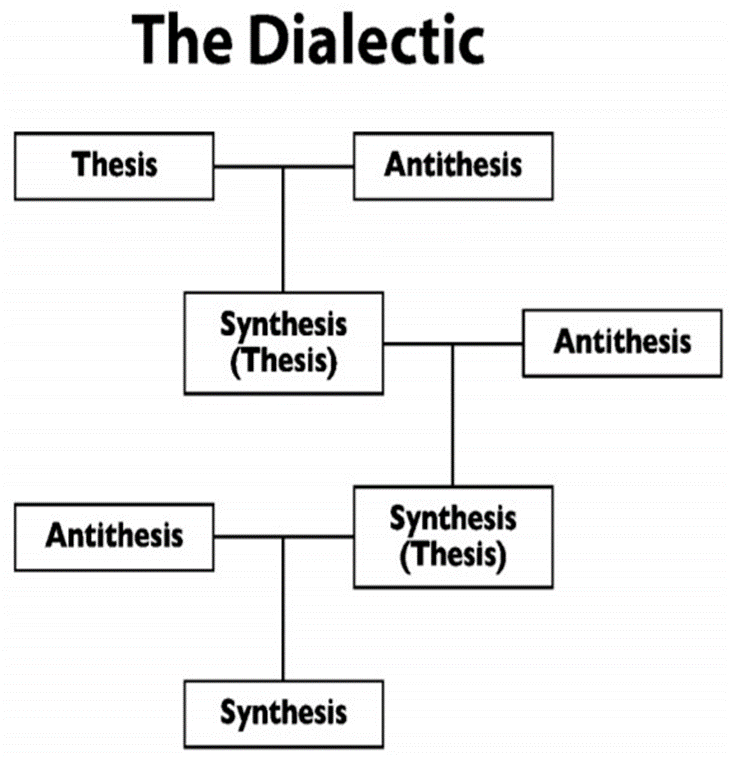Lesson 7: Methods of Philosophizing
Methods of Philosophizing
The Dialectic Method
This method of philosophizing was formulated by the Greek philosopher Socrates, one of the great philosophers of the ancient world. The method starts with eliciting the definition of a certain word from a person who appears to be familiar (or “pretends” to be familiar) with its meaning.
Socrates then points out the imperfections of the person’s understanding through a series of questions. What Socrates desires is for the person to realize his ignorance and contradictions, thereby correcting his mistakes and arriving at a complete knowledge of the word's true meaning.
The method, however, does not sit well with the ruling elites of Athens (the city where Socrates lived).
They accused him of not worshiping the Greek gods and corrupting the youth.
His defense (which was dramatically recorded in Plato’s dialogue the Apology) was a model of “forceful argument” but it fell on deaf ears.
Socrates was forced to drink poison. He was the first philosopher to die fighting for truth.
The Socratic Method was modernized and treated in a different way by George Wilhelm Hegel, a German philosopher.
People are social beings and can be completely
influenced by other people’s ideas.
An individual’s mind is influenced using a common language, the customs of one’s society, and the cultural institutions to which one belongs.
Hegel refers to “Spirit” as the collective consciousness of a society which is responsible for honing one’s consciousness and ideas.
Hegel also believed that the Spirit is constantly changing and evolving.
According to Hegel, the spirit changes through dialectic. First, there is an idea about the world (much like a thesis), which has a natural characteristic of having errors that give rise to the antithesis. The thesis and antithesis can be eventually resolved by creating a synthesis which is a new idea comprised of the essentials of both the thesis and the antithesis

The Pragmatic Method
Pragmatism was popularized by William James and institutionalized in American culture by John Dewey.
Pragmatists seek to make philosophy relevant by solving real-life problems.
Pragmatism aims to test the view of science, religion, and philosophy by determining their practical results. The pragmatic test is: if I practice this belief, will it bring success or failure? Will I solve problems or create problems? A successful experience is the verification process of truth for pragmatists
The Phenomenological Method
The phenomenological method was conceived by Edmund Husserl, one of the greatest intellects of the 19th century.
Husserl’s main purpose was to build a philosophy free from any biases or preconceived ideas. One can only do this if one returns to immediate experience.
This experience is the world as it appears to us or the phenomenal world - hence, the term phenomenology.
The Primary and Secondary Reflections
According to Gabriel Marcel, reflection arises when there is a disruption from your normal routine and when something valuable is at stake.
Marcel identified two levels of reflection: primary reflection and secondary reflection. Marcel applied these two levels of reflection to the most fundamental question: “Who am I?”
Example of Primary Reflection
When we try to fill up a form given by our school for example. The form asked us to write our name, age, gender, address, name of parents, etc. To answer this, of course, we have to think to distinguish who we are (the self) against other things (the non-self or objects). This is the primary reflection.
Example of Secondary Reflection
We view ourselves as bigger and more expansive than what is there on the form. Thus, we are not merely thinking but we are thinking about thinking and about the process we perform in answering the form.
The result of secondary reflection is a more expansive view of the self until it embraces the world. Thus, the separation of the self and the world brought about by primary reflection was united by secondary reflection.
The Analytic Method
The Analytic Method was initiated by philosophers at Cambridge University (England): George Edward Moore (1873-1958), Bertrand Russell (1872-1970) and Ludwig Wittgenstein (1889- 1951).
The task of the analytic method is to clarify how philosophers used words through an analysis of language.
Wittgenstein said that ‘the object of philosophy is the logical clarification of thought’
For example, the usage of words like
“demand”, “supply”, “money”, and “price” in the context of economics differ from their usage in everyday life. These are technical words and they follow certain rules (i.e. the language game) within that discipline that affect the way these words are used.
REMEMBER:
Methods of Philosophizing:
Dialectic- two opposing sides (thesis and antithesis which will lead to synthesis)
Pragmatic- practical application
Analytic- context of language
Phenomenological- experiences
Primary Reflection- distinguish who we are (the self) against other things (the non-self or objects).
Secondary Reflection- a more expansive view of the self